
Messier 99 or M99, also known as NGC 4254, is a grand design spiral galaxy in the northern constellation Coma Berenices approximately 15,000,000 parsecs from the Milky Way. It was discovered by Pierre Méchain on 17 March 1781. The discovery was then reported to Charles Messier, who included the object in the Messier Catalogue of comet-like objects. It was one of the first galaxies in which a spiral pattern was seen. This pattern was first identified by Lord Rosse in the spring of 1846.

NGC 4414 is an unbarred spiral galaxy about 62 million light-years away in the constellation Coma Berenices. It is a flocculent spiral galaxy, with short segments of spiral structure but without the dramatic well-defined spiral arms of a grand design spiral. In 1974 a supernova, SN 1974G, was observed and was the only supernova in this galaxy to be recorded until June 7, 2013 when SN 2013df was discovered at magnitude 14 and January 1, 2021 when SN 2021J was discovered at magnitude 12.
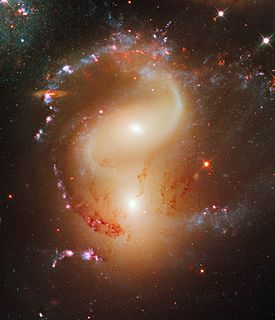
NGC 7318 is a pair of colliding galaxies about 280 million light-years from Earth. They appear in the Constellation Pegasus and are members of the Stephan's Quintet.
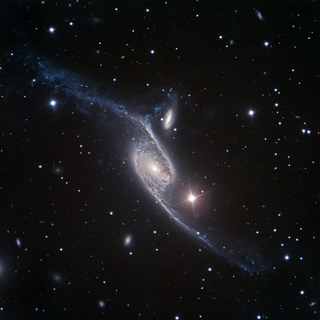
NGC 6872, also known as the Condor Galaxy, is a large barred spiral galaxy of type SB(s)b pec in the constellation Pavo. It is 212 million light-years (65 Mpc) from Earth and is approximately five billion years old. NGC 6872 is interacting with the lenticular galaxy IC 4970, which is less than one twelfth as large. The galaxy has two elongated arms; from tip to tip, NGC 6872 measures over 522,000 light-years (160,000 pc), making it one of the largest known spiral galaxies. It was discovered on 27 June 1835 by English astronomer John Herschel.
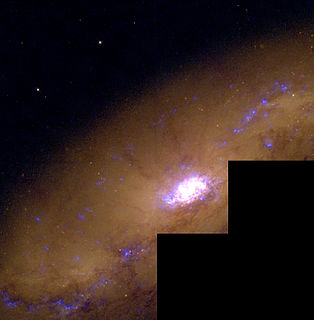
NGC 1808 is a barred spiral galaxy located in the southern constellation of Columba, about two degrees to the south and east of Gamma Caeli. It was discovered by Scottish astronomer James Dunlop, who described it as a "faint nebula". The galaxy is a member of the NGC 1808 group, which is part of the larger Dorado Group.
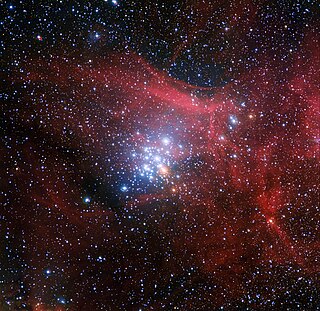
NGC 3293 is an open cluster in the Carina constellation. It was discovered by Nicolas-Louis de Lacaille in 1751. It consists of more than 100 stars brighter than 14th magnitude in a 10 arc minute field, the brightest of which are blue supergiants of apparent magnitude 6.5 and 6.7. There is also a 7th magnitude pulsating red supergiant, V361 Carinae.
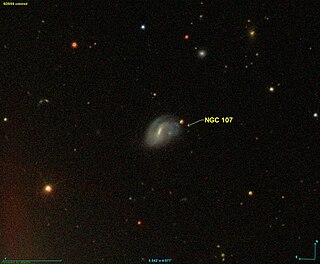
NGC 107 is a spiral galaxy estimated to be about 280 million light-years away in the constellation of Cetus. It was discovered by Otto Struve in 1866 and its magnitude is 14.2.

NGC 2613, is a spiral galaxy in the southern constellation of Pyxis, next to the western constellation border with Puppis. It was discovered by the German-born astronomer William Herschel on November 20, 1784. With an apparent visual magnitude of 10.5, the galaxy is faintly visible using a telescope with a 100 mm (4 in) aperture. It appears spindle-shaped as it is almost edge-on to observers on Earth.

NGC 128 is a lenticular galaxy in the constellation Pisces. It is approximately 190 million light-years from the Sun and has a diameter of about 165,000 light-years.
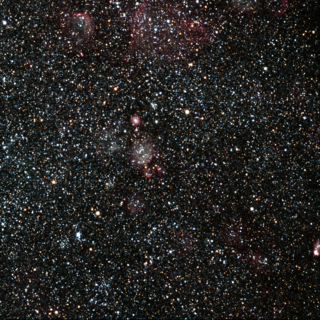
NGC 267 is an open cluster in the Small Magellanic Cloud. It is located in the constellation Tucana. It was discovered on October 4, 1836 by John Herschel.

NGC 327 is a spiral galaxy in the constellation Cetus. It was discovered on September 27, 1864 by Albert Marth. It is described by Dreyer as "faint, small, extended." It is nearby galaxies NGC 329, NGC 325 and NGC 321.

NGC 375 is an elliptical galaxy located in the constellation Pisces. It was discovered on September 12, 1784 by William Herschel. It was described by Dreyer as "pretty faint, small, round, brighter middle." Along with galaxies NGC 379, NGC 380, NGC 382, NGC 383, NGC 384, NGC 385, NGC 386, NGC 387 and NGC 388, NGC 375 forms a galaxy cluster called Arp 331.
NGC 5662 is an open cluster in the constellation Centaurus. It was discovered by Nicolas Louis de Lacaille on May 17, 1752 from South Africa. James Dunlop observed it on July 10, 1826 from Parramatta, Australia and added it to his catalog as No. 342.

NGC 492, also occasionally referred to as PGC 4976 or GC 280, is a barred spiral galaxy in the constellation Pisces. It is located approximately 590 million light-years from Earth and was discovered on December 6, 1850 by Irish engineer Bindon Blood Stoney. Although John Dreyer, creator of the New General Catalogue, credits the discovery to astronomer William Parsons, 3rd Earl of Rosse, he notes that many of his claimed discoveries were made by one of his assistants. In the case of NGC 492, the discovery was made by Bindon Stoney, who discovered it along with NGC 486, NGC 490 and NGC 500 during his observation of NGC 488 using Lord Rosse's 72" telescope.

NGC 1019 is a barred spiral galaxy approximately 316 million light-years away from Earth in the constellation of Cetus. It was discovered by French astronomer Édouard Stephan on December 1, 1880 with the 31" reflector at the Marseille Observatory.
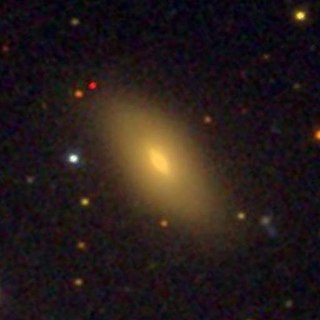
NGC 1274 is a compact elliptical galaxy located about 280 million light-years away in the constellation Perseus. NGC 1274 was discovered by astronomer Lawrence Parsons on December 4, 1875. It is a member of the Perseus Cluster.
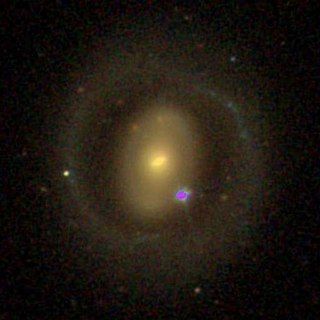
NGC 3821 is a low surface brightness spiral galaxy and a ring galaxy about 270 million light-years away in the constellation Leo. The galaxy was discovered by astronomer William Herschel on April 26, 1785 and is a member of the Leo Cluster.

NGC 3886 is a lenticular galaxy located about 280 million light-years away in the constellation Leo. It was discovered by astronomer Heinrich d'Arrest on May 9, 1864. The galaxy is a member of the Leo Cluster.

NGC 3585 is an elliptical or a lenticular galaxy located in the constellation Hydra. It is located at a distance of circa 60 million light years from Earth, which, given its apparent dimensions, means that NGC 3585 is about 80,000 light years across. It was discovered by William Herschel on December 9, 1784.


















